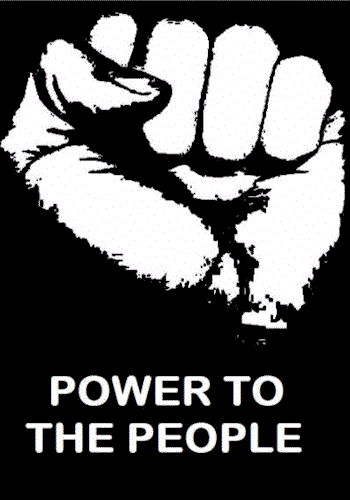The ‘Us Now’ documentary is centered around the idea of collaboration and power of the people which is being empowered through increasing access to, and understanding of the internet. The film focuses on a number of different perspectives throughout, but is all based on the idea of people coming together to make change and help one another online.

More and more these days, people are taking to the internet and forming groups in order to achieve something which is in mutual interest to members of the group. ‘Us Now’ looks at the power of things like forums and mass-voting sites, as well as a communally managed football team in the UK. Whilst none of these relate directly to the events that we’re hosting for Integrated Media this semester, they represent what our prototypes have the potential to evolve into, post-event, and once the social media side of our project truly takes over. Although my groups’ idea, ‘The CBD Games’ isn’t going to change much in Melbourne in a political sense, it just goes to show that an idea with an online community behind it has the potential to grow rapidly and become something special.
As with real life movements, revolutions, protests and the like, online lobbies form out of mutual interest and often grow rapidly. This tendency of people coming together to achieve something is something that ‘Us Now’ recognises as having happened previously in history, and as finally making a resurgence now, in the digital age. With the aid of the internet, people are more connected than ever and it is easy to exploit this phenomenon to achieve positive change, as the interview subjects in ‘Us Now’ demonstrate. Subsequently, through the power of the internet, people are empowered to get involved, to participate, to help one another and to work towards something that is beneficial, both for them, personally and in a wider sense, communally, nationally or even globally.
Due to the power that the internet provides to regular citizens, people are becoming less reliant on their governmental institutions for change, taking matters into their own hands and using the power of mass-collaboration for good. ‘Us Now’ reflects on the diminishing role of such institutions and recognises that the internet is becoming a tool for society to achieve what they want, even if the government is opposed or unwilling to help. Through this empowerment and the growing tendency for online lobbies to materialise and make a difference in the real world, the role of the internet in society has completely shifted, becoming recognised as a tool for making things happen.
Although ‘Us Now’ definitely focuses on the idea of mass-collaboration, it is all made possible by peoples’ willingness to participate. This notion can be applied to the events that we’re holding for IM2 this semester. Sure, we can have a great idea, with a great plan and put in all the time we want, but it’s not going to go anywhere or be successful unless properly promoted through social media, recognised by a number of people and responded to on the day of the event, whilst also being followed up in the days after on social media.


